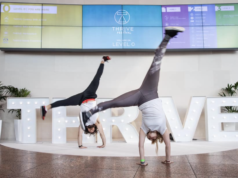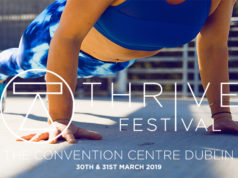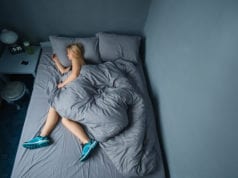

“Ask the Physio” We have been running since our days as hunters and gatherers. Nowadays it is not so much a necessity as a hobby. It is a most convenient form of exercise as no equipment is required. Many runners even favour barefoot running – very low maintenance! Running is a free activity (particularly appealing in the current climate) and is acceptable everywhere.
From the novice runner to the elite competitor, running can be a great way to clear your mind and most importantly build and maintain great fitness levels. Perhaps the most frustrating thing that can happen once you get into your stride is an injury to stop you in your tracks.
Running injuries are very common. They tend to be overuse injuries and usually develop slowly over many weeks or even months. It is normal not to feel the gradual tightening or weakening of a structure as it is happening until suddenly it is triggered and pain disrupts your whole regime.
The most important thing you can do when this happens is take a rest. If the pain eases after 2-3 days, great! If is continues beyond this point, you must get a thorough assessment. “Running through the pain” will significantly delay your recovery.
Your local Chartered Physiotherapist will be able to assess the different factors that may be contributing to your injury.
The approach must to tailored specifically to your alignment, your muscle strength and flexibility, your training regime and surfaces, your running shoes (or not!) and your goals for competition or weight loss. Most importantly your rehab programme will depend on your exact diagnosis and the factors that have led to you developing that injury. It is never a one size fits all approach. General exercises from the internet will not sort you out in the longterm.
The most common area affected by running injuires is the lower limbs:
? 30-40% are to the knee
? 25% to the leg
? 15-25% to the foot and ankle.
? Less than 10% of running injuries affect the lower back and hip
Contributory factors include training errors, previous injury history, age, sex, training surface, competitive training, footwear and biomechanical parameters.
Common injuries include:
? Knee pain – often called chondromalacia patella, peripatellar pain, retropatellar pain, anterior knee pain, runners’ knee.
? Iliotibial band syndrome
? Stress fractures
? Shin Splints
? Anterior Compartment Syndrome
Conidtions that are more common in the older running population include:
? Plantar fasciitis
? Achilles tendinitis
? Back and knee changes related to degenerative joint changes
Top Tips for Great Running!
1. Gluteus medius strength is vital for supporting the pelvis in the stance phase of running. If this muscle is weak, it leads to “Trendenlenburg gait”. This means that the weakened muscle allows the pelvis to tilt down on the opposite side during the stance phase of walking or running. The gluteus medius muscle should be assessed in any running injury to ensure proper activation and strength.
Your Chartered Physiotherapist will perform 3 tests to check the gluteus medius strength; The Clam, Hip abduction in side-lying and the Single leg squat.
2. Quadriceps flexibility is commonly overlooked and can cause significant knee problems. It is easy to rectify with stretching and foam rolling. Remember that the rectus femoris muscle crosses the hip and knee joints so deserves that bit of extra attention. It is very easy to massage your own quadriceps using your forearm and elbow for that extra physio depth!
3. Unilateral heel raises should be easy on the right and left sides. So many patients just accept that their balance is poor and laugh as they fall off the wobble board! Do something about it!
Think about the breakdown of the running stride, the propulsion phase requires you to push off your toes against gravity and lift your body weight. If you cannot easily raise your heel off the floor on each side due to weakness or poor balance, your running career will not go far. Look at yourself in the mirror and make sure it looks the same on both sides. Watch for sickling, where the feet lean to one side, and correct it.
4. The lower back can get very tight in runners. Get 2 tennis balls (or even better, 2 spikey massage balls) and lie with them under your back and with your knees bent up. You can move them up and down to the affected area, even into the top of the gluts and sacro-iliac joints to find your tender points. Press the lower back onto the balls and roll or tilt the pelvis for a great massage.
5. Keep your feet in great shape by rolling the sole of the foot on a golf ball every night before you go to bed. Then practice picking up a piece of tissue 50 times with each foot. This will improve the condition and strength of the small intrinsic muscles of the foot and prevent cramping.
6. If you have a history of ankle sprains, make sure that your dorsi-flexion range is equal on both sides. The ankle can be stiff post injury, and particular attention needs to be paid to this during the rehabilitation phase. It is often the reason why it takes longer than expected to return to full function.
Test it by standing facing a wall with the ankle to be tested in front of the other. Place that knee against the wall and bring that foot back as far as you can, keeping the knee on the wall and heel on the ground. Mark where the big toe lands with some tape. Then compare to the other side.
If there is a difference, you will need to attend your Chartered Physiotherapist for some localised manipulations to free up the stiff side.
7. As a runner, there are certain areas that are prone to tightness; the hip flexors, hamstings and achilles tendons. A foam roller in conjunction with stretching is the best way to work these areas, rather than stretching alone.
Jenny Branigan is a Chartered Physiotherapist and owns Total Physio, a private practice in Booterstown, South Dublin. For more information, please see www.totalphysio.ie or call Jenny at 01-2600344.
More about Jenny in her profile : https://www.runireland.com/contributors/jenny-branigan
From the novice runner to the elite competitor, running can be a great way to clear your mind and most importantly build and maintain great fitness levels. Perhaps the most frustrating thing that can happen once you get into your stride is an injury to stop you in your tracks.
Running injuries are very common. They tend to be overuse injuries and usually develop slowly over many weeks or even months. It is normal not to feel the gradual tightening or weakening of a structure as it is happening until suddenly it is triggered and pain disrupts your whole regime.
The most important thing you can do when this happens is take a rest. If the pain eases after 2-3 days, great! If is continues beyond this point, you must get a thorough assessment. “Running through the pain” will significantly delay your recovery.
Your local Chartered Physiotherapist will be able to assess the different factors that may be contributing to your injury.
The approach must to tailored specifically to your alignment, your muscle strength and flexibility, your training regime and surfaces, your running shoes (or not!) and your goals for competition or weight loss. Most importantly your rehab programme will depend on your exact diagnosis and the factors that have led to you developing that injury. It is never a one size fits all approach. General exercises from the internet will not sort you out in the longterm.
The most common area affected by running injuires is the lower limbs:
30-40% are to the knee
25% to the leg
15-25% to the foot and ankle.
Less than 10% of running injuries affect the lower back and hip
Contributory factors include training errors, previous injury history, age, sex, training surface, competitive training, footwear and biomechanical parameters.
Common injuries include:
Knee pain – often called chondromalacia patella, peripatellar pain, retropatellar pain, anterior knee pain, runners’ knee.
Iliotibial band syndrome
Stress fractures
Shin Splints
Anterior Compartment Syndrome
Conidtions that are more common in the older running population include:
Plantar fasciitis
Achilles tendinitis
Back and knee changes related to degenerative joint changes
Top Tips for Great Running!
1. Gluteus medius strength is vital for supporting the pelvis in the stance phase of running. If this muscle is weak, it leads to “Trendenlenburg gait”. This means that the weakened muscle allows the pelvis to tilt down on the opposite side during the stance phase of walking or running. The gluteus medius muscle should be assessed in any running injury to ensure proper activation and strength.
Your Chartered Physiotherapist will perform 3 tests to check the gluteus medius strength; The Clam, Hip abduction in side-lying and the Single leg squat.
2. Quadriceps flexibility is commonly overlooked and can cause significant knee problems. It is easy to rectify with stretching and foam rolling. Remember that the rectus femoris muscle crosses the hip and knee joints so deserves that bit of extra attention. It is very easy to massage your own quadriceps using your forearm and elbow for that extra physio depth!
3. Unilateral heel raises should be easy on the right and left sides. So many patients just accept that their balance is poor and laugh as they fall off the wobble board! Do something about it!
Think about the breakdown of the running stride, the propulsion phase requires you to push off your toes against gravity and lift your body weight. If you cannot easily raise your heel off the floor on each side due to weakness or poor balance, your running career will not go far. Look at yourself in the mirror and make sure it looks the same on both sides. Watch for sickling, where the feet lean to one side, and correct it.
4. The lower back can get very tight in runners. Get 2 tennis balls (or even better, 2 spikey massage balls) and lie with them under your back and with your knees bent up. You can move them up and down to the affected area, even into the top of the gluts and sacro-iliac joints to find your tender points. Press the lower back onto the balls and roll or tilt the pelvis for a great massage.
5. Keep your feet in great shape by rolling the sole of the foot on a golf ball every night before you go to bed. Then practice picking up a piece of tissue 50 times with each foot. This will improve the condition and strength of the small intrinsic muscles of the foot and prevent cramping.
6. If you have a history of ankle sprains, make sure that your dorsi-flexion range is equal on both sides. The ankle can be stiff post injury, and particular attention needs to be paid to this during the rehabilitation phase. It is often the reason why it takes longer than expected to return to full function.
Test it by standing facing a wall with the ankle to be tested in front of the other. Place that knee against the wall and bring that foot back as far as you can, keeping the knee on the wall and heel on the ground. Mark where the big toe lands with some tape. Then compare to the other side.
If there is a difference, you will need to attend your Chartered Physiotherapist for some localised manipulations to free up the stiff side.
7. As a runner, there are certain areas that are prone to tightness; the hip flexors, hamstings and achilles tendons. A foam roller in conjunction with stretching is the best way to work these areas, rather than stretching alone.
Jenny Branigan is a Chartered Physiotherapist and owns Total Physio, a private practice in Booterstown, South Dublin. For more information, please see www.totalphysio.ie or call Jenny at 01-2600344.
More about Jenny in her profile : https://www.runireland.com/contributors/jenny-branigan






